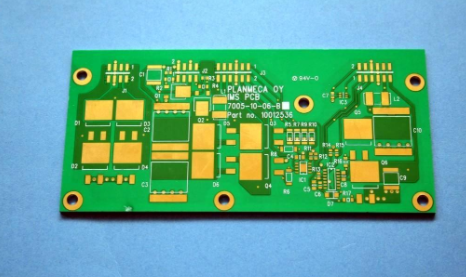Terminal control technology of transmission line (Termination)

1 It can be seen from the above that when the "signal" travels in the transmission line and reaches the end point and wants to work in the receiving element (such as CPU or Meomery and other ICs of different sizes), the "characteristic impedance" of the signal line itself must be It must be matched with the internal electronic impedance of the terminal element, so that the task will not fail in vain. In terminology, it means to execute instructions correctly, reduce noise interference, and avoid wrong actions." Once they fail to match each other, there will be a little energy bounce back towards the "transmitting end", which will cause the trouble of reflection noise (Noise). .
2 When the characteristic impedance (Z0) of the transmission line itself is set as 28 ohm by the designer, the grounding resistor (Zt) of the terminal control must also be 28 ohm, so as to assist the transmission line to maintain Z0 and stabilize the whole Design value of 28 ohm. Only in this matching situation of Z0=Zt, the signal transmission will be the most efficient, and its "signal integrity" (signal integrity, a special term for signal quality) is also the best.
Characteristic Impedance
1 When a square wave of a signal moves forward with a high-level positive pressure signal in the signal line of the transmission line assembly, the reference layer (such as the ground layer) closest to it is theoretically necessary. The negative pressure signal induced by the electric field accompanies it (equal to the return path of the positive pressure signal), so that the overall loop system can be completed. If the "signal" is moved forward, if its flight time is temporarily frozen, you can imagine what it has suffered.
To the instantaneous impedance value (Instantanious Impedance) presented by the signal line, dielectric layer and reference layer, this is the so-called "characteristic impedance". Therefore, the "characteristic impedance" should be related to the line width (w), line thickness (t), dielectric thickness (h) and dielectric constant (Dk) of the signal line.
2 Consequences of poor impedance matching Because the original term "characteristic impedance" (Z0) of high-frequency signals is very long, it is generally referred to as "impedance". Readers must be careful, this is not exactly the same as the impedance value (Z) that appears in the low-frequency AC (60Hz) wire (not the transmission line). In digital systems, the Z0 of the entire transmission line can be managed properly, and if it is controlled within a certain range (±10﹪ or ±5﹪), this good quality transmission line will reduce noise and prevent misoperation. . However, when any one of the four variables (w, t, h, r) of Z0 in the above microstrip line is abnormal, such as a gap in the signal line, the original Z0 will rise suddenly (see Z0 and Z0 in the above formula). W is inversely proportional to the fact), and can not continue to maintain the due stability and uniformity (Continuous), the energy of the signal will inevitably occur part of the advancement, but part of the lack of rebound reflection. In this way, noise and malfunction cannot be avoided. For example, the hose for watering flowers is suddenly stepped on, causing abnormalities at both ends of the hose, which can just explain the above-mentioned problem of poor characteristic impedance matching.
3 Poor impedance matching causes the rebound of the above-mentioned signal energy of the noise, which will cause the original good-quality square wave signal to appear abnormally immediately (that is, the overshoot of the high level upward, the undershoot of the low level downward, and the second The follow-up Ringing). When such high-frequency noise is severe, it will cause malfunctions, and the faster the pulse speed, the more noise and the easier it will be to make mistakes.
The above is an introduction to the terminal control technology of the transmission line in the PCB design. Ipcb also provides PCB manufacturers and PCB manufacturing technology